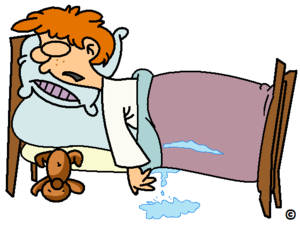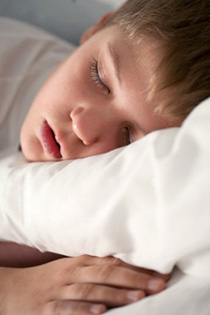But here’s the good news: the answer may be right under your nose or, in this case, your child’s nose. Research by Derek Mahoney, a paediatrician at the Prince of Wales Hospital in Sydney, found that 80% of children presenting with bed-wetting at the hospital were found to have dysfunctional breathing. His research was reported in New Scientist in August 2003.i
Dr Mahoney's research showed that all these children had pronounced narrowing of the palate and believes this contributes to their breathing problems. Dr Mahoney has achieved dramatic results by fitting a brace to help widen the palate. A Swedish study found that 7 out of 10 bed-wetting children improved within a month of using a similar device and a UK-based study found that all the children who used a brace stopped wetting the bed.
And breathing problems often have more serious consequences than bed-wetting, such as enlarged adenoids/tonsils, glue ear, respiratory infections, asthma, allergies and chronic cough. Problems at school, learning difficulties, behavioural problems hyperactivity and headaches are also linked to dysfunctional breathing.
A dental brace may not be necessary – the first thing you need to address is the mouth-breathing habit that causes the narrow palate in the first place. Nasal breathing and correct tongue posture is the key to resolving bed-wetting in children and in most cases this can be achieved without the need for dental appliances. The tongue functions as a natural brace when nasal breathing is restored.
We teach children simple, easy-to-learn breathing exercises that are practised daily for 4-6 weeks. In the majority of cases bed-wetting stops within a few sessions. The programme helps restore a natural breathing pattern and correct nasal breathing habits. Improvement usually occurs within a few days. By the end of the course, most children are breathing easily and can put their bed-wetting days behind them.
Other breathing-related conditions including swollen adenoids, glue ear and disturbed sleep also resolve as breathing returns to normal parameters.
Contact us to learn more.
Download a copy of this article [PDF] »




